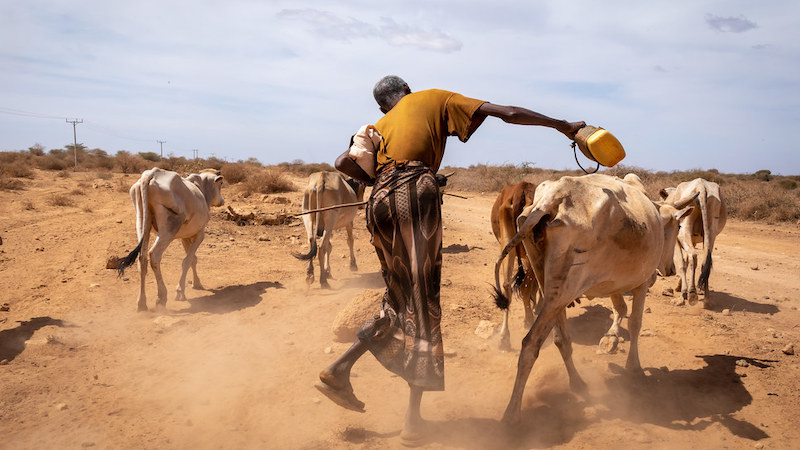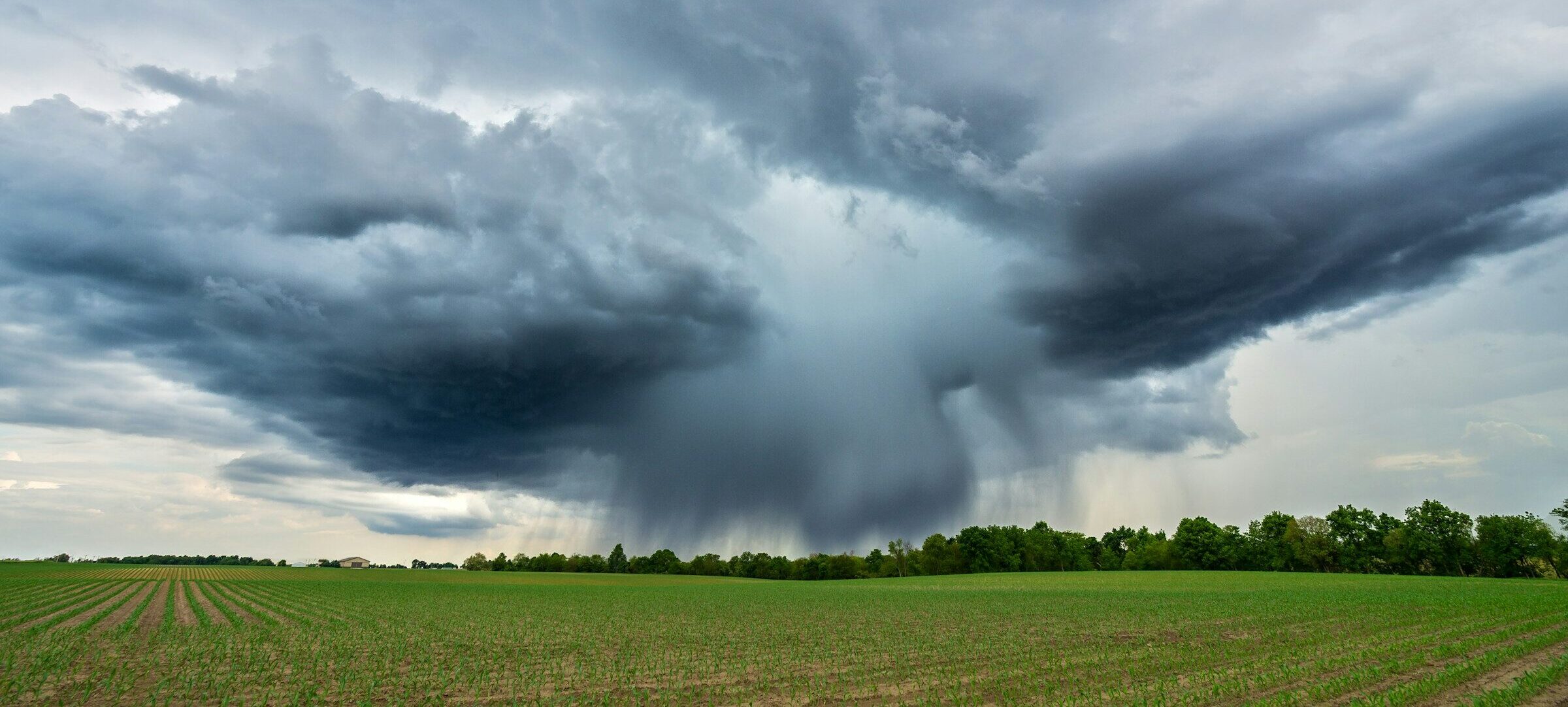As the effects of climate change become increasingly apparent, the urgency to adapt has never been greater. Rising global temperatures, altered weather patterns, and the increasing frequency of extreme events—such as floods, droughts, and storms—are impacting livelihoods, infrastructure and ecosystems. To address these challenges, adaptation has emerged as a critical focus.
Why Adaptation?

A Somali herder tries to keep his cows alive amid a devastating drought. Photo: UNICEF Ethiopia/2022/Mulugeta Ayene
Adaptation is vital because, despite efforts to reduce greenhouse gas emissions, the momentum of climate change will continue to reshape our planet for decades. Adaptation efforts concentrate on building resilience in vulnerable populations, protecting critical ecosystems, and ensuring the sustainability of essential sectors like agriculture, water resources, and public health. By investing in adaptation, societies can mitigate risks, minimise economic losses, and enhance social stability amid climate-related disruptions.
Across the globe, numerous initiatives are underway to develop resilient systems capable of withstanding climate related hazards. These projects aim to enhance infrastructure, conserve natural ecosystems, and protect vulnerable populations from the adverse effects of climate change. However, a crucial question remains: can these initiatives achieve their goals?
The Role of Impact Investments
A key player in global adaptation efforts is the Green Climate Fund (GCF), which emphasizes a country-driven approach. Founded in 2010 within the framework of the UNFCCC, the GCF’s objective is to assist developing countries with climate change adaptation and mitigation activities. By encouraging partnerships between governments, local stakeholders, and the private sector, the GCF seeks to create a collaborative ecosystem where innovative solutions can flourish. Its projects span various sectors, including renewable energy, sustainable agriculture, and climate-resilient infrastructure.The GCF’s mandate and role in supporting climate action in developing countries are unique. , According to Mafalda Duarte, GCF’s Executive Director, “We must act with the urgency the climate crisis demands.”The Green Climate Fund (GCF) intends to achieve its goals by investing across four transitions – built environment; energy & industry; human security, livelihoods and wellbeing; and land-use, forests and ecosystems – and employing a four-pronged approach (its investments in food and agriculture fall within this third category):
- Transformational planning and programming
- Catalyszing climate innovation
- De-risking investment to mobilise finance at scale
- Mainstreaming climate risks and opportunities into investment decision-making
In the pursuit of maximiszing impact through sustainable financing, the Fund recogniszes the need for collaborative efforts. By leveraging strategic partnerships, the GCF aims to enhance its effectiveness and reach. According to GCF Chief Investment Officer, Henry Gonzalez, “Our next frontier is partnerships with institutional investors such as asset owners. There is a significant appetite for blended finance and impact investing among these investors”
Initial Progress in Agriculture and Food Security
Currently, a total of 148 countries have a National Designated Authority or Focal Point, with 129 of these countries having approved projects under the Green Climate Fund (GCF).

Across these regions, 278 projects have been approved so far. Among the total approved projects, 118 are adaptation projects, while 85 are cross-cutting. Among the 118 adaptation projects, 87 are in the category of health, food, and water security, and 52 projects in the cross cutting theme. A total of 64 of these projects are in African states, and 33 in Small Island Developing States.
Of the total of $15 billion approved so far by the GCF, land use and agricultural projects supporting climate adaptation fall under the category of health, food, and water security, in which $1.8 billion has been committed. In the African region, for example, our analysis of projects approved for funding by the GCF showed that 33 projects have been approved from 2021 to the present in the categories of health, food, and water security. Here’s a chart below showing the geographic distribution.

These 33 projects have a combined value of $8.7 billion, with the majority of the approved funding ($6.3 billion) allocated to projects implemented in multiple countries.
Factors for Success
While adaptation projects are well-intentioned their long-term success will depend on several factors. Effective planning, community engagement, continuous monitoring, and sustained financial and political support.
In many developing regions, communities depend heavily on natural resources. Farmers, fishers, and pastoralists rely on predictable weather patterns and stable ecosystems. As climate change disrupts these patterns, local economies suffer, leading to food, water, and income insecurity. Thus, effective planning that incorporates local knowledge, active community engagement to foster ownership, continuous monitoring for adaptability, and sustained financial and political support are crucial to building resilience and ensuring that adaptation efforts lead to meaningful and lasting change.
The GCF finances projects of varying scales, from small initiatives under $50 million to large-scale efforts exceeding $250 million. A significant portion of its funding targets small and medium-sized projects aimed at adaptation. For instance, substantial investments have been directed toward initiatives like the Infrastructure Climate Resilient Fund in Benin, while localized projects have received targeted support.
Local Exemplars
One notable project supported by the GCF is in Thua Thien Hue, Vietnam, where the region faces severe climate vulnerabilities, including frequent storms and floods. With a project value of $10 million, the GCF has committed $8.65 million in grant funding. This initiative focuses on enhancing early warning systems, improving climate-resilient planning, and sustainably managing agricultural and forested land. The project also emphasizes gender inclusivity, to ensure women play a significant role in adaptation efforts.
Similarly, in Malawi, the GCF has approved a $52.3 million project aimed at enhancing resilience and food security for nearly 575,000 vulnerable individuals. This initiative, titled “Ecosystems-based Adaptation for Resilient Watersheds and Communities in Malawi” (EbAM), promotes sustainable practices and ecosystem restoration, equipping communities with the tools needed to thrive in a changing climate. With this initiative, the GCF is not just providing financial support but is also empowering communities to adapt and flourish in a changing climate, setting a standard for resilience in the region.
There are several other climate adaptation projects approved for financing by the GCF. For instance, earlier this year, the Green Climate Fund launched the Acumen Climate Action Pakistan Fund, an initiative aimed at bolstering climate resilience among vulnerable farmers in Pakistan. Recogniszing the severe climate-related risks faced by the country—especially in the agriculture sector—the fund will provide USD $90 million in patient capital to agribusinesses. This support targets smallholder farmers, who constitute 90% of the agricultural workforce and are increasingly threatened by rising temperatures and extreme weather events that jeopardisze crop yields and food security.
In March of this year, the Green Climate Fund (GCF), in partnership with the International Fund for Agricultural Development (IFAD), approved a funding of $150.8 million for the s DEFIS+, this initiative, which aims to mitigate the adverse effects of climate change in Madagascar through targeted adaptation measures. Specifically, it seeks to address the severe challenges posed by prolonged droughts and unpredictable rainfall patterns that jeopardise food security and livelihoods. The project seeks to enhance climate resilience in agricultural systems while promoting income generation through improved market access and ensuring food and nutrition security.
Scratching the Surface of the Adaptation Requirement
While the Green Climate Fund has been more successful in raising and deploying capital than some of its early critics feared it is still just a drop in the ocean relative to the projected needs for climate adaptation finance for developing and emerging economies.
The UN’s Adaptation Finance Gap (AFG) Update 2023 presents an updated assessment of the costs associated with climate adaptation for developing countries. According to the report, the estimated central costs for adaptation this decade (up to 2030) are approximately US$240 billion per year. While the highest absolute adaptation costs are borne by upper- and lower-middle-income countries, the financial burden, when expressed as a percentage of GDP, is significantly greater for low-income countries, which face adaptation costs of 3.5% of their GDP, compared to 0.7% for lower-middle-income countries and 0.5% for upper-middle-income countries.
Adaptation costs in agriculture for developing countries are projected to be US$16 billion per year (in 2021 prices) over the period from 2015 to 2050, with East Asia incurring the highest regional costs, followed by sub-Saharan Africa.
As of July 2023, 85 developing countries have specified their adaptation finance needs in their nationally determined contributions (NDCs) or national adaptation plans (NAPs). The total cost to implement adaptation priorities outlined in these submissions amounts to approximately US$105 billion per year for the period 2021–2030, which represents 1.5% of the gross domestic product (GDP) of these countries. The priority sectors for adaptation finance generally include water, agriculture, and infrastructure, although specific priorities can vary by country. Analysis indicates that the average adaptation finance needs for all developing countries for 2021–2030 are estimated at US$387 billion per year, with a range between US$101 billion and US$975 billion annually. This total corresponds to about 1% of these countries’ GDP, with variations ranging from 0.25% to 2.50%.
To compare the Green Climate Fund’s approved funding for 2023, which totals USD 2.1 billion, with the estimated annual adaptation needs for developing countries, we would observe a chart similar to the one presented below:

Conclusion
Despite the growing momentum of climate financing, there remains significant uncertainty regarding the long-term resilience of communities benefiting from funded initiatives. While some projects may lead to short-term improvements—such as increased agricultural yields or enhanced infrastructure—the fundamental question of their effectiveness in fostering sustainable resilience remains unanswered.
Many areas, particularly those vulnerable to drought and extreme weather, face ongoing challenges that current efforts may not sufficiently address. Although innovative practices like improved water management systems show promise, the reality is that the impacts of climate change continue to escalate, often outpacing adaptation measures.
Furthermore, while the Green Climate Fund (GCF) has approved a range of projects aimed at enhancing community resilience, the Adaptation Finance Gap reveals a concerning reality: the funding required to meet global adaptation needs far surpasses current commitments. Bridging this gap will necessitate not only increased investment but also innovative financing mechanisms and more international collaboration.
The GCF’s target of investing USD 50 billion by 2030 highlights the urgency of addressing these challenges. However, without a significant scaling of funding and a more comprehensive approach to adaptation, the long-term resilience of vulnerable communities remains in jeopardy. Ultimately, while the initiatives funded by the GCF have the potential to create meaningful adaptation, achieving this requires ongoing commitment and a thorough reevaluation of strategies to ensure communities are prepared to face the challenges posed by a changing climate.
Paul Temidayo
Independent researcher for Resilience Constellation

